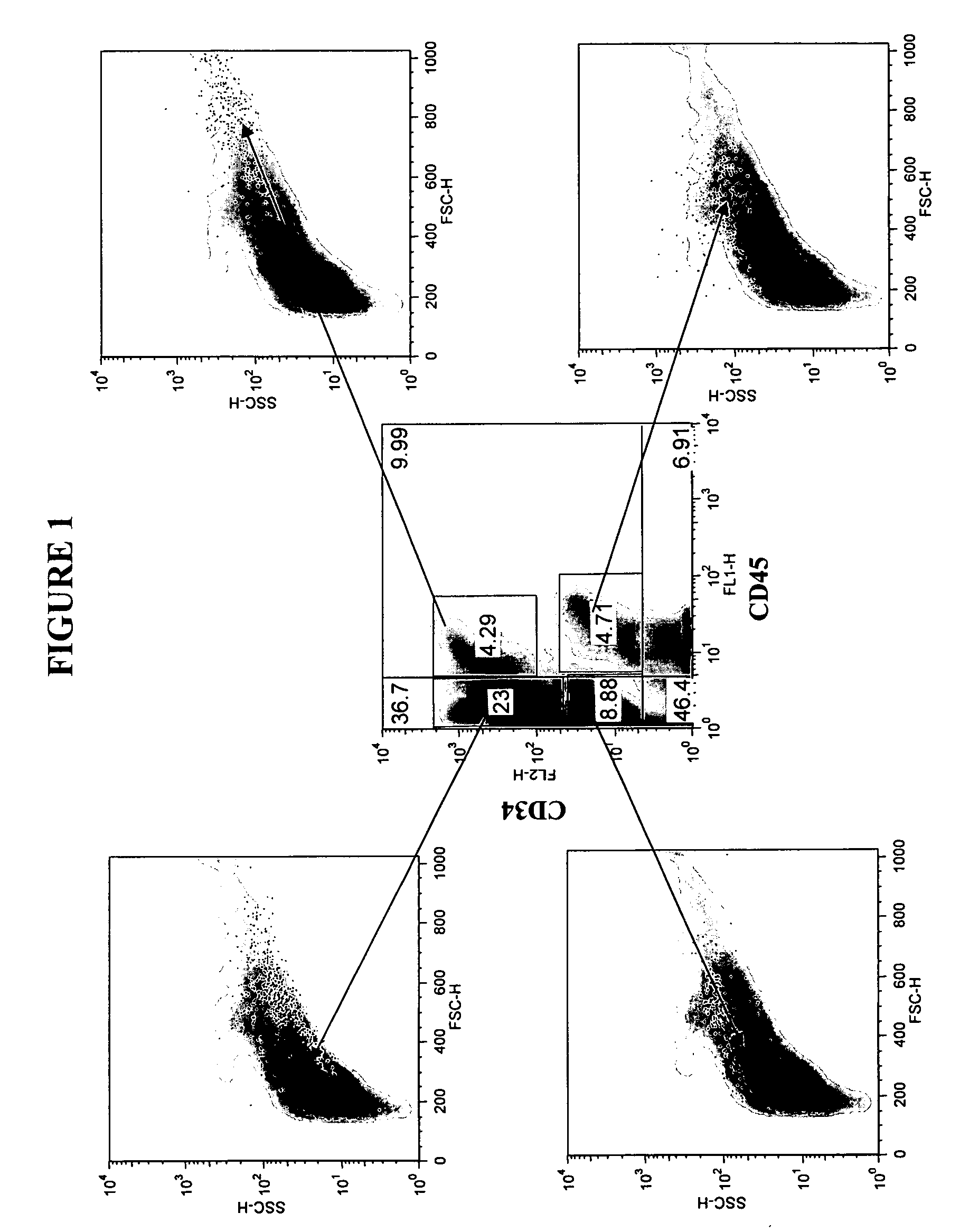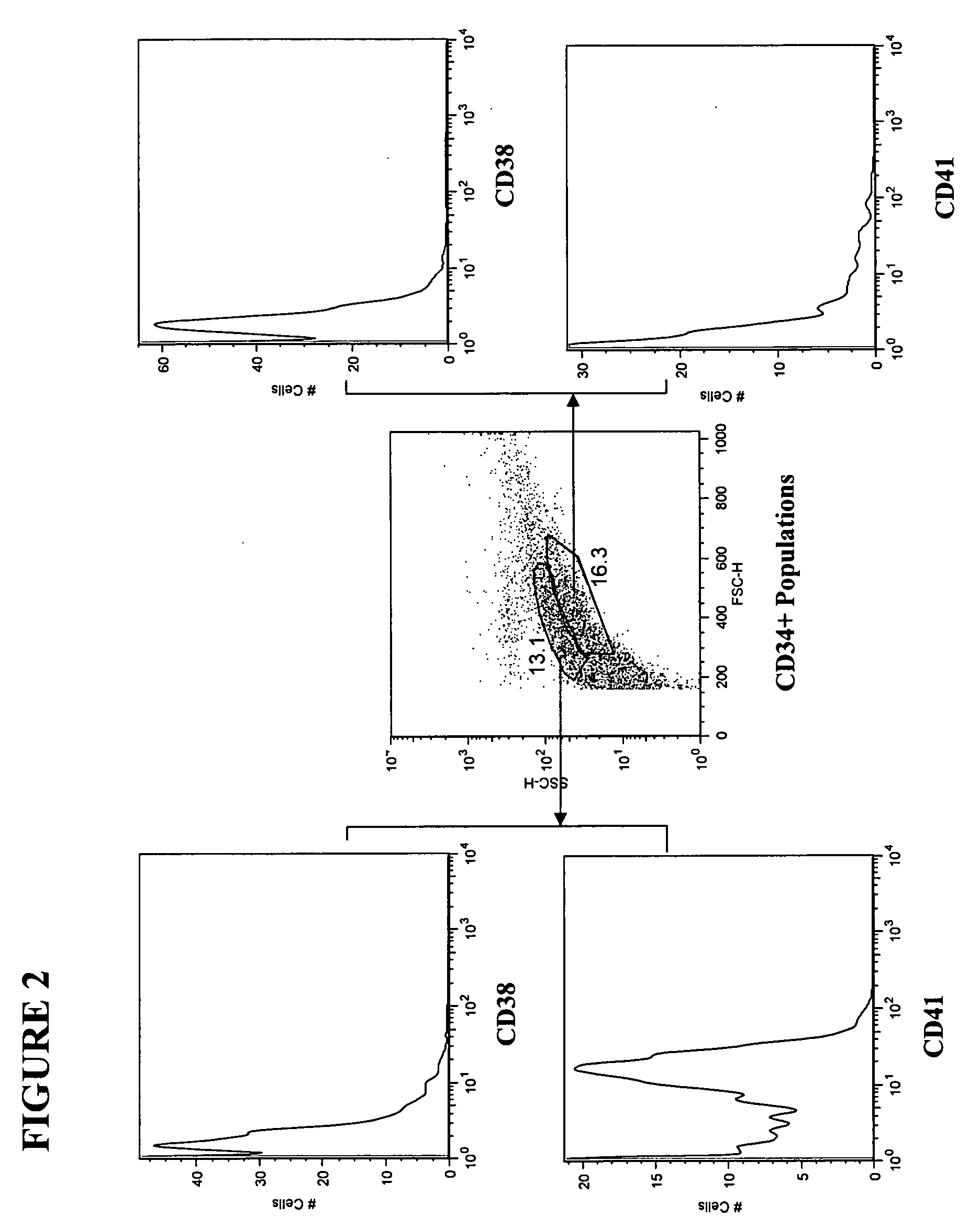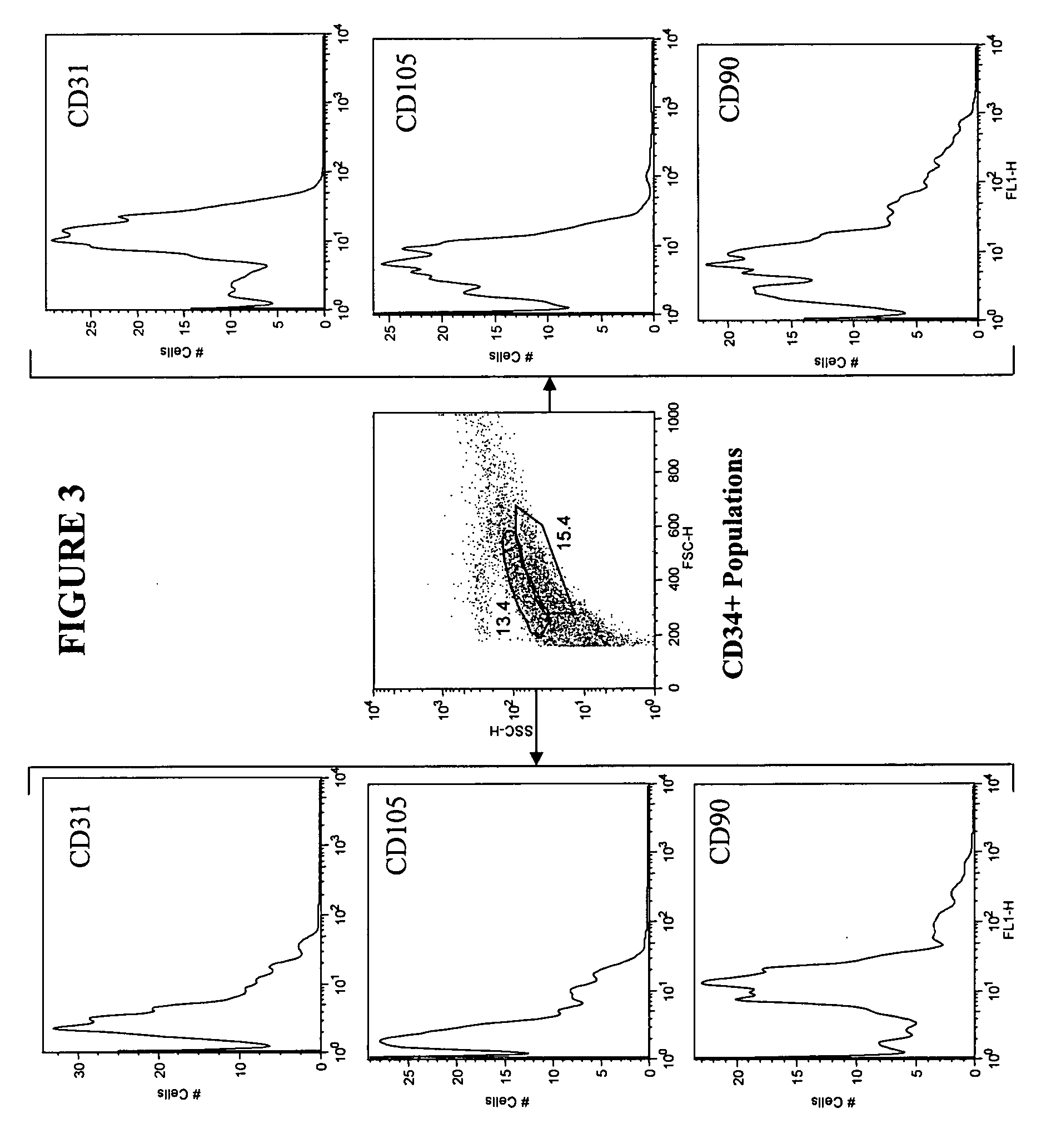Isolation and purification of hematopoietic stem cells from post-liposuction lipoaspirates
a technology of hematopoietic stem cells and lipoaspirates, which is applied in the direction of extracellular fluid disorder, skeletal/connective tissue cells, instruments, etc., can solve the problems of cd34sup>+/sup>cells being extremely rare, obtaining bone marrow is a long and unpleasant procedure, and significant volume of marrow
- Summary
- Abstract
- Description
- Claims
- Application Information
AI Technical Summary
Benefits of technology
Problems solved by technology
Method used
Image
Examples
experimental examples
[0129] The invention is further described in detail by reference to the following experimental examples. These examples are provided for purposes of illustration only, and are not intended to be limiting unless otherwise specified. Thus, the invention should in no way be construed as being limited to the following examples, but rather, should be construed to encompass any and all variations which become evident as a result of the teaching provided herein.
example 1
Isolation of Hematopoietic Stem Cells from Lipoaspirate Adipose Tissue
[0130] Adipose tissue was obtained from liposuction lipoaspirate performed on human subjects for cosmetic reasons. A 50 milliliter (ml) lipoaspirate material was washed by mixing with 50 ml PBS (phosphate buffered saline) and aspirating the aqueous layer below the fat. The cell suspension was washed twice more with PBS, until the wash was straw colored. The aqueous washes were pooled and saved as “aspirate post-wash pellet” (APWP). Fifty (50) ml of 95 mg collagenase dissolved in 50 ml PBS+1% bovine serum albumin (BSA) was added to the washed cell suspension and the mixture was transferred to a T-185 flask. The flask was incubated at 37° C. on a Belly Dancer® shaker (Stovall Life Science, Greensboro, N.C.) for 1 hour.
[0131] The dissolved fat was centrifuged at approximately 550×g (1600 rpm) for 6 minutes. The top, fatty layer, about 10-20 ml, was poured off. The cell pellet was resuspended in the remaining supern...
example 2
Bone Marrow Repopulation Assay using Adipose-Derived HSCs
[0146] Human adipose tissue-derived hematopoietic stem cells obtained in Example 1 are tested for hematopoietic differentiation based on a bone marrow repopulation assay. Immunodeficient SCID or nude / beige mice are lethally-irradiated with 11 Gy of γ-irradiation in a split dose and maintained on a diet of acidified water and autoclaved food. Hematopoietic cells are isolated at quantities of approximately 107 cells per transplant hematopoietic cells when of murine origin (107 bone marrow-derived cells) or approximately 106 cells per transplant when of human origin (106 adipose-derived HSCs or 106 SVF cells) and are introduced into the mice 16 hours following the lethal irradiation by injection through the tail vein or retro-orbital vein or intraperitoneally. Alternatively, the human cells are mixed with the murine hematopoietic cells at a ratio of approximately 1:10 prior to transplantation into a sub-lethally-irradiated host ...
PUM
| Property | Measurement | Unit |
|---|---|---|
| concentrations | aaaaa | aaaaa |
| temperatures | aaaaa | aaaaa |
| temperatures | aaaaa | aaaaa |
Abstract
Description
Claims
Application Information
 Login to View More
Login to View More - R&D
- Intellectual Property
- Life Sciences
- Materials
- Tech Scout
- Unparalleled Data Quality
- Higher Quality Content
- 60% Fewer Hallucinations
Browse by: Latest US Patents, China's latest patents, Technical Efficacy Thesaurus, Application Domain, Technology Topic, Popular Technical Reports.
© 2025 PatSnap. All rights reserved.Legal|Privacy policy|Modern Slavery Act Transparency Statement|Sitemap|About US| Contact US: help@patsnap.com



